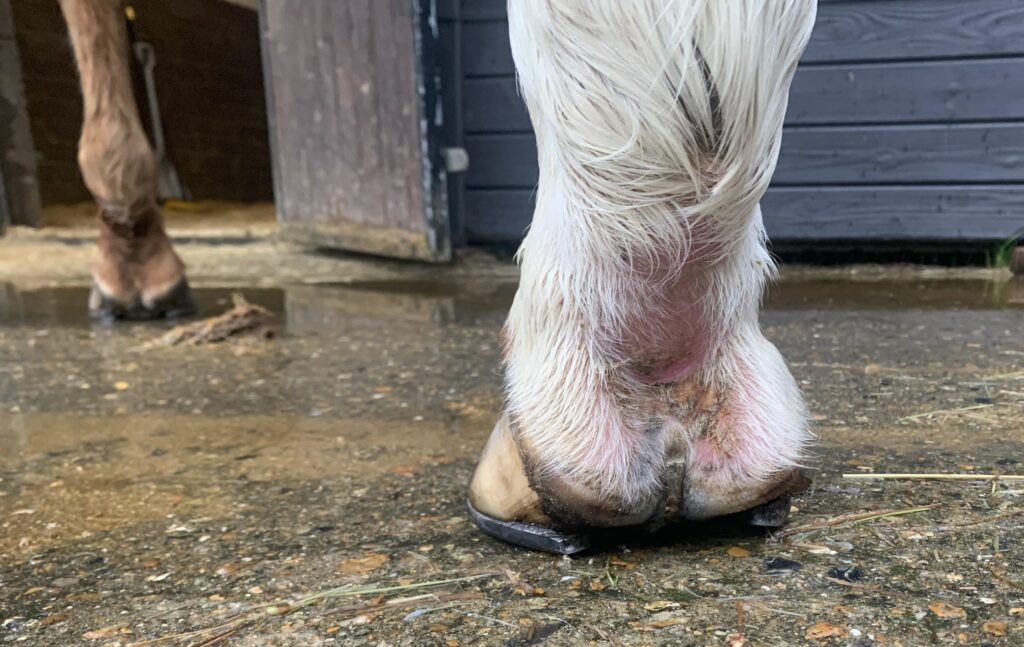Featured, First Aid, Veterinary, Wound Care
Help my horse has mudfever what should I do?
The Horse Hub spoke to equine vet Alex Paterson for some top tips on treating mudfever
When horses are turned out in wet conditions the outer layer of the skin can eventually soften and weaken, which allows the bacteria that causes mudfever to penetrate its protective barrier, leading to inflammation and infection.
If you are sure your horse has a fairly mild case of mudfever or rain scald, then here are some tips to help you manage and cure it. If your horse or pony has swollen legs, is lame, very sore or, the condition is widespread SPEAK TO YOUR VET! Infections that breach the skin barrier can lead quickly to more serious conditions such as cellulitis or lymphangitis.
Washing and drying the legs – while feathers can act as a barrier protecting the skin, when mudfever takes hold it is harder to spot and the legs take longer to dry so, clipping the legs can be beneficial in these cases. If legs are washed daily when the horse comes in from the field, it is useful to have a pack of microfibre cloths from the supermarket to dry them off before stabling – these cloths are quick to wash out and dry ready to reuse.

How to treat mudfever
Wash the legs to remove mud, and dry them well.
When dry clip/trim away hair from heels if they are feathered but, be careful – your horse may not tolerate clipping if he is very sore so, remove as much hair as possible from the affected area to make it easier to access and treat.
Wash the legs once with chlorhexidine (Hibiscrub™) in a dilution of 20:1 or less, in warm water – the solution should be lighter in colour than pale skin – this will kill bacteria. Leave on for no longer than 2 minutes then rinse off and dry the legs – it is important to rinse well because Hibiscrub™ contains soap, which should not be left on the skin and will not aid healing. Read our tips on using Hibiscrub™ here
When the legs are dry apply an emollient cream – we use a rosemary and sulpher cream – it is easy to work gently into the scabs and softens them quickly – do not pick off dry scabs this will be painful and cause more problems. To soften scabs zinc and castor oil cream, and udder cream are also go to favourites with many owners.
If you need to wrap the legs to soften the scabs you can do this on clean dry legs, by coating the affected area in a thick layer of an emollient cream, wrapping with clingfilm and then bandaging. This can be left on overnight or for a day, before washing off with warm water and drying, then applying more cream. Do not repeatedly wrap the legs!
Apply cream daily on clean dry skin working it in gently to remove the scabs until they are all gone. Do not repeatedly wash legs with chlorhexidine it will not promote healing and if used inappropriately, can damage the epithelial (healing) cells and delay healing.
- When turning out a good barrier cream or mud shield powder can help prevent infection
- Keep a close eye on legs and heels – the quicker mudfever is spotted the easier and quicker it will be to treat and eliminate!
Related reading: Wet skin conditions What is lymphangitis?
